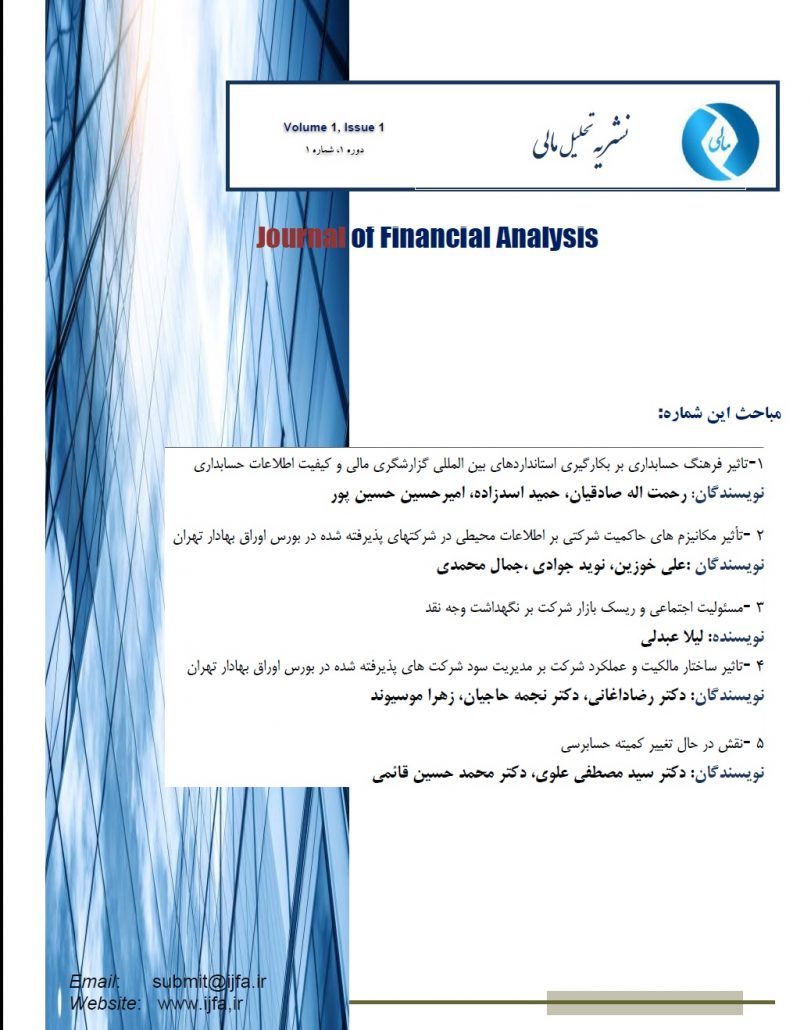رویکردهای نظری در تخصیص منابع مالی در آموزش عالی
احمد سعیدی
دکتری اقتصاد و مدیریت مالی آموزش عالی و استادیار موسسه پژوهش و برنامه ریزی آموزش عالی
ارتباط با نویسنده: a_saidee@yahoo.com
تاریخ دریافت: ۲۲/۰۷/۱۳۹۶، تاریخ انجام اصلاحات:۲۰/۰۸/۱۳۹۶ تاریخ پذیرش:۲۷/۱۰/۱۳۹۶
Theoretical approaches for allocating funds in higher education
Ahmad Saeeidi
Associate Professor, Institute for Research and Planning in Higher Education. Corresponding author
Email: a_saidee@yahoo.com
Received 14/10/2017, Revised 11/11/2017, Accepted 17/01/2017
چکیده
در زمینه تخصیص منابع مالی در آموزش عالی سوال مهم این است که در عمل در خصوص تخصیص منابع مالی درون دانشگاه چه میگذرد. آیا تخصیص منابع مالی درون دانشگاهی از یک منطق اقتصادی تبعیت میکند. به عبارت ساده تر «افرادی که به تخصیص بودجه در درون دانشگاه، در حین تخصیص بودجه، واقعاً به چه چیزی فکر میکنند و دلواپس چه مسئلهای هستند؟». یا یک تخصیص دهنده کلان بودجه (مثلاً هیأت دولت) یا یک تخصیص دهنده خرد (یک رئیس دانشگاه) هر دو در مقام مدیر ( و البته سیاستمدار) آیا در تخصیص منابع مالی، جوانب صرفاً عقلایی – اقتصادی را در نظر میگیرند یا به دنبال منفعت سیاسی از طریق تخصیص نیز هستند. در این مقاله این مسئله که دانشگاهها در خصوص فرآیند تخصیص منابع چگونه عمل میکنند، مبنای گزینش تئوریهای مختلف برای تبیین جنبه های مختلف این فرآیند تصمیمگیری درباره تخصیص منابع درون دانشگاهی قرار گرفته است. در این مقاله، چندین تئوری که مناسب «تبیین مبنای توزیع و تخصیص منابع مالی درون آموزش عالی» است، را مرور می کنیم. در این خصوص اگرچه چندین تئوری در مورد دانشگاه به عنوان یک سازمان وجود دارد، اما دو تئوری وجود دارد که به طور خاص در مورد تخصیص منابع در دانشگاهها (به ویژه دانشگاه های دولتی) مناسب به نظر میرسند. این دو، تئوری منطقی- سیاسی و تئوری انتقادی- سیاسی هستند. همچنین دو تئوری دیگر (تئوری اقتصادی بنگاه و تئوری وابستگی منابع) نیز که به نظر می رسد با تبیین فرآیند تخصیص منابع درون دانشگاه مرتبط هستند ( اما به عنوان جزئی از دو نظریه قبلی و در درون آنها تشخیص داده شد)، بررسی شده است. در انتهای مقاله مقایسه ای بین این دو رویکرد نظری انجام پذیرفته و با بیان شواهد و یافته های تجربی از تخصیص منابع مالی درون آموزش عالی ایران ، به تحلیل و کاربست این دو تئوری در آموزش عالی کشور پرداخته و توصیه هایی برای آموزش عالی ایران داده شده است.
کلمات کلیدی: تخصیص منابع مالی، آموزش عالی، رویکردهای نظری تخصیص منابع
Theoretical approaches for allocating funds in higher education/Ahmad Saeeidi
In the area of allocating funds in higher education, the key question is that what happens in practice about the allocation of funding within the university. Does the allocation of internally-funded resources have an economic logic ? Simply put, “What do they really think in allocating budget and what means when allocating funds within a university? Budget settings (for example, a government board or directors of the university), both as manager (and of course, the politicians), whether they consider purely rational-economic aspects or they also seek benefits in allocating financial resources.
In this article, the problem that “how universities behave about the resource allocation process” was the basis for choosing different theories to explain the various aspects of this decision-making process regarding the allocation of resources within the university. In this paper, we review several theories that are appropriate for “explaining the basis of the distribution and allocation of financial resources within higher education.” In this regard, although there are several theories about the university as an organization, but there are two theories that seem most appropriate to allocate resources to universities (especially government universities). These two are rational-political theory and critical-political theory. Also, two other theories (firm economic theory and resource dependency theory), which appear to be related to explaining the process of resource allocation within the university, have been investigated (but have been identified as part of the previous two theories and within them).
At the end of the article, a comparison is made between these two theoretical approaches and by presenting the empirical evidence and findings of the allocation of funds within the higher education of Iran, we have analyzed and applied these two theories in higher education in Iran and provided recommendations for them
Key words: allocation ,funds, higher education, theoretical approaches
Ahmad Saeeidi . Theoretical approaches for allocating funds in higher education . Journal of Financial Analysis , ۲: ۳۰-۳۹, ۲۰۱۸. (IF=.001)
@article{ ahmad saeeidi ۲۰۱۸,
title={ Theoretical approaches for allocating funds in higher education },
author={ Ahmad Saeeidi },
journal={ Journal of Financial Analysis },
year={2018},
pages={30--39},
publisher={IJFA}
}بازدیدها: ۴۷۵


